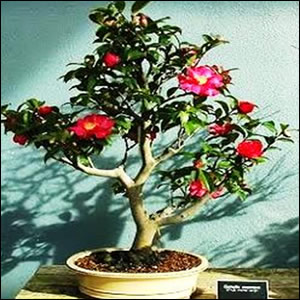Camellia japonica is a flowering tree or shrub, usually 1.5–6 m tall. In the wild, flowering is between January and March. The flowers appear along the branches, particularly towards the ends, and have very short stems. They occur either alone or in pairs,
CultivationCamellias should be planted in the shade in organic, somewhat acidic, semi-moist but well drained soil. If the soil is not well drained, it can cause the roots to rot.
DiseasesThese include fungal and algal diseases,
- Spot Disease, which gives the upper side of leaves a silver colour and round spots, and can cause loss of leaves.
- Black Mold; Leaf Spot; Leaf Gall; and Flower Blight, which causes flowers to become brown and fall.
- Root Rot; and Canker caused by the fungus Glomerella cingulata, which penetrates plants through wounds.
- Insects and pests of C. japonica are the Fuller Rose Beetle, mealybugs and the tea scale beetle.
- They are subject to salt injury which results from high levels of salt in soil.
- Chlorosis which is thought to be caused lack of certain elements in the soil or insufficient acidity preventing their absorption by the roots.
- Bud drop which causes loss or decay of buds, and can be caused by over-watering, high temperatures, or pot-bound roots.


